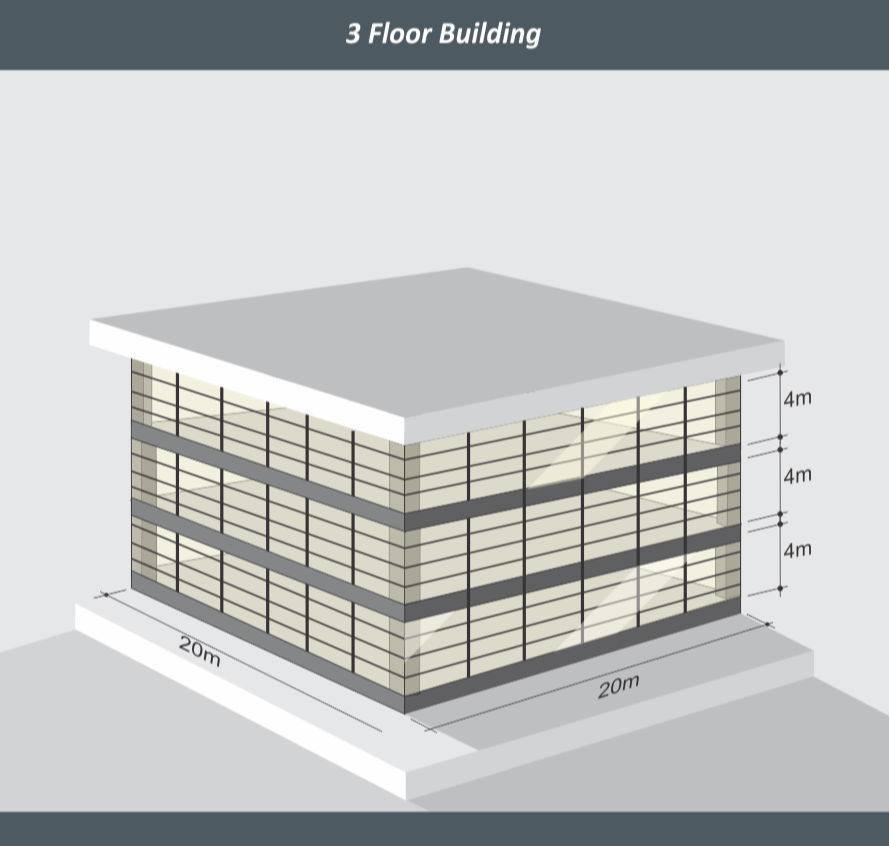ACH vs Permeability in Airtightness
Airtightness in large enclosures can get tricky and complicated. We see some pretty questionable things in specifications for the testing of these types of facilities. While these buildings are often fairly airtight considering their construction, the metrics used to evaluate them can be entirely inappropriate.
Why targeting ACH is not quite right
Using Air Changes per Hour (ACH) at 50Pa or even at ambient pressures like 4Pa — which are volume-based measurements — rather than a permeability rate (which is surface area-based) misrepresents how leaky a commercial or industrial facility really is. When ACH is used as the metric, larger enclosures will appear to perform better simply due to their size — not necessarily because of better build quality. This means that a consistent standard leakage rate cannot be reliably specified when ACH is the target. Compare the ACH for these 3 examples.
A standard single-storey house
Floor Area: 125m2
Volume: 300m3
Surface area: 389.5m2
A building at 5 m3/h/m2@50Pa would be 6.5ACH@50Pa
OR
A standard single-storey Passive house
Floor Area: 125m2
Volume: 300m3
Surface area: 389.5m2
A building that achieves passive house .6ACH@50Pa needs to achieve .462 m3/h/m2@50Pa
Smaller volumes or components of buildings trying to achieve .6ACH@50Pa can be next to IMPOSSIBLE to achieve when services penetrations and windows are a part of the building fabric.
Not much of a problem for now, the permeability rate and air change rate are very similar, due to these types of buildings usually being quite small. Volume and Surface area numbers are largely similar. (However, very large homes, can enjoy the benefits of ACH)
Small Commercial Building Volume: 20m x 20m x 12m = 4800m3
Volume: 20m x 20m x 12m = 4800m3
Surface area: 1760m2
A building at 5 m3/h/m2@50Pa would be 1.83 ACH@50Pa
Identical Build quality as the home but it enjoys over THREE times lower ACH Rate
Large Commercial Building
Surface area: 21600m
A building at 5 m3/h/m2@50Pa would be 1.03ACH@50Pa
Identical Build quality as the home but it enjoys a FIVE times lower ACH Rate. This building could be Passive house air tight if passive house didn’t have the rule that buildings larger than 4000m3 in volume need to use a permeability rate.
Using ACH on Commercial buildings, Oil & Gas rig refuges or any type of large enclosure larger than 3000m3 in volume, means the larger the enclosure, the easier it is to pass a particular target inadvertently. For build quality, a permeability rate which uses the surface area of the building, requires a target based on air flow through a square meter of building envelope with simulated airspeeds of 32km/h winds. This standard methodology ensures results are meaningful, reproducible, and comparable across buildings of all sizes.
Find out more about the Building Code of Australia and its guidelines here.





